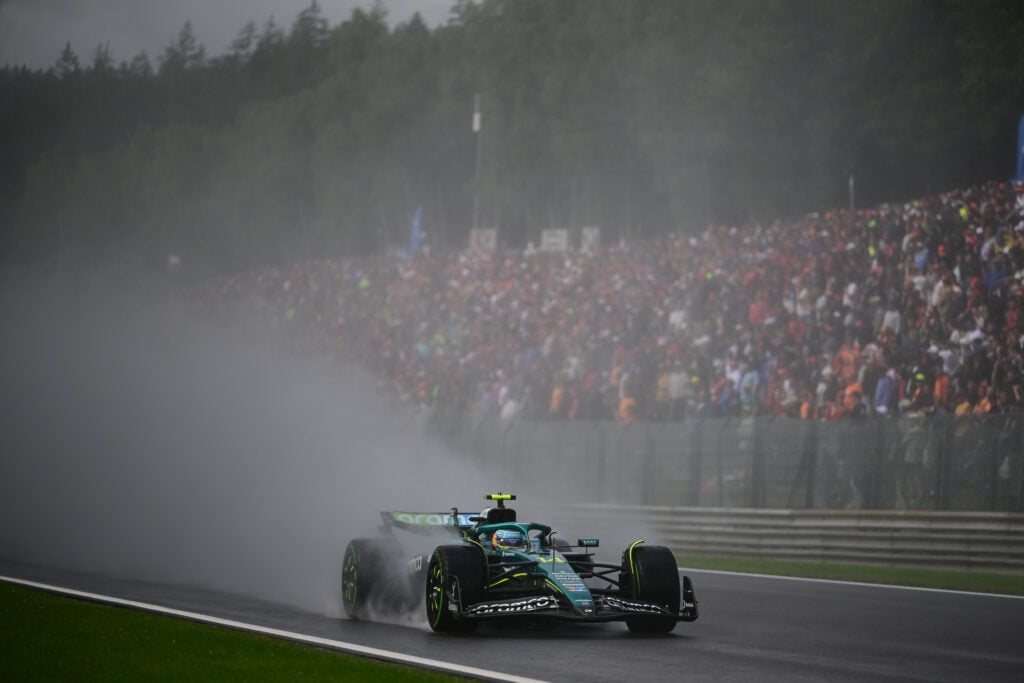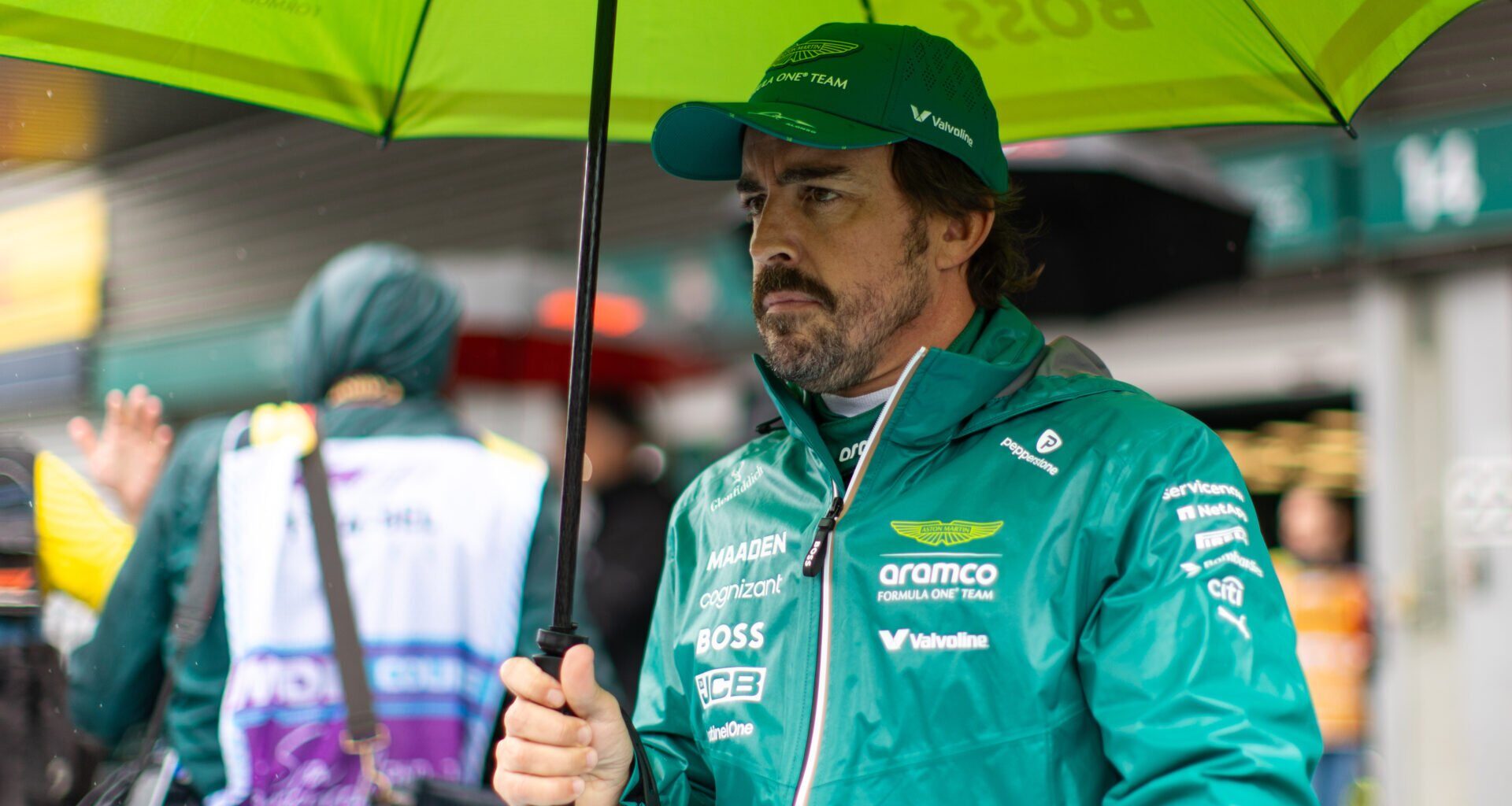Fernando Alonso has pinpointed the issue with the current F1 cars that makes it so difficult to race in heavy rain conditions.
One hour and 20 minutes was how long the FIA delayed the start of the Belgian Grand Prix due to heavy rain that fell over the Ardennes forest.
Max Verstappen was the only driver on the grid who felt like the conditions were good enough to be raced, mainly down to the fact that Red Bull changed his rear wing to a higher downforce setup before qualifying in anticipation of the rain on Sunday.
In hindsight, the call to delay the start of the race could be seen as a good one, considering the fact that all 20 cars took the chequered flag at the Belgian GP, with no early retirements.
READ MORE: All to know about Aston Martin F1 Team from team principal to lineage
Fernando Alonso pinpoints the current F1 tyres being the main hindrance to visibility in wet conditions
Ahead of the Hungarian Grand Prix, Fernando Alonso told media, via motorsport.com, his views on why it’s so difficult for F1 drivers to navigate races during poor conditions, saying, “The wide tyres definitely made visibility worse.
“Probably some of the asphalts on the circuits are a little bit different than what they’ve been in the past because we raced with a lot of water in Sepang, in different circuits, and it was always OK. Now this new generation of asphalt, which is very black and very grippy on dry conditions, is like a mirror in wet conditions.”
 Photo by Andrea Diodato/NurPhoto via Getty Images
Photo by Andrea Diodato/NurPhoto via Getty Images
The width of the F1 tyres that they currently utilise was introduced ahead of the 2017 season, which saw the width of the rear tyres increased from 325mm to 405mm. At the time, the change was made in hopes of increasing the mechanical grip of the tyres to allow for more aggressive racing.
What the FIA didn’t take into account, at the time, was the increase in spray from the tyres during rainy conditions due to the larger surface area. This slight increase in width amounts to a whopping 20 litres per second difference per tyre in how much water is displaced when the tyres are in motion.
READ MORE: Aston Martin driver Fernando Alonso’s life outside F1 from net worth to Cars 2
Fernando Alonso’s point may be solved with the new 2026 F1 regulations
However, there is a light at the end of the tunnel for the vast majority of fans whose hopes of a wet-weather thriller in Belgium were thwarted by the FIA’s ruling on the day.
The 2026 technical overhaul of F1 cars will see the width of the tyres shrink slightly, to around 375mm for the rears and 280mm for the fronts. The effect this will have on water displacement will see a 10-litre per second drop-off, down to 75 litres per tyre.
It certainly won’t be the end-all be-all of visibility issues for drivers in low-visibility conditions, but it will be an improvement on what we are currently seeing drivers battle with.
It’s hard to say how much of an effect it will have on the FIA’s decisions during wet Grands Prix, but it does give fans something to be hopeful about heading into F1’s new era.

